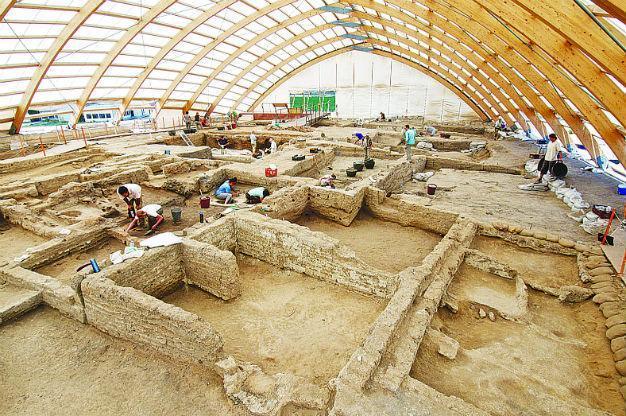Çatalhöyük drawing world’s attention to Anatolia
EDİRNE – Anadolu Agency
 Çatalhöyük’s inclusion on the UNESCO World Heritage List has done wonders for tourism at the 9,000-year-old site in Central Anatolia, according to the head of the excavations at the site, Professor Ian Hodder.
Çatalhöyük’s inclusion on the UNESCO World Heritage List has done wonders for tourism at the 9,000-year-old site in Central Anatolia, according to the head of the excavations at the site, Professor Ian Hodder. “There has been an increase in the number of tourists. Çatalhöyük has become the center of archaeological tourism,” he said.
Hodder, who recently attended an archaeological symposium in the northwestern province of Edirne, said Çatalhöyük was one of the oldest settlements in the world dating back 9,000 years ago.
“It is a Neolithic and chalcolithic-era settlement. I’ve done 25 years of excavations at Çatalhöyük, which entered the UNESCO World Heritage list in 2012. We have made very detailed works, and we are now getting their results,” Hodder said.
Noting the importance of Çatalhöyük’s inclusion on the World Heritage List, Hodder said: “We are getting the positive result of this development. Being included in the World Heritage List shows the world that Anatolia and Turkey are home to such significant places. Since Çatalhöyük is one of the oldest settlements, there are very good artistic artifacts. Lots of Turkish and foreign tourists have begun visiting the excavation area since then. Çatalhöyük has become the center of the archaeological tourism center.”
The professor said it was very important that Konya, which is located in the center of Anatolia, draws tourists thanks to Çatalhöyük.
“We draw the world’s attention to the center of Anatolia. People particularly want to see the places on the World Heritage List. In my opinion, this is a very big step for tourism,” the professor said, noting that he hoped others would continue the excavations after his retirement within the next year.
Hodder said Çatalhöyük revealed very good findings every year. “We found a plastered-head. The eyes of the head are made of obsidian, natural glass. It is an extraordinary finding. I hope we will find things like this.”
Çatalhöyük was discovered in 1958 by archaeologist James Mellaart and excavations were carried out between 1961 and 1963 and then again in 1965. After a long break, work at the site resumed in 1993 under Hodder of Stanford University.
















